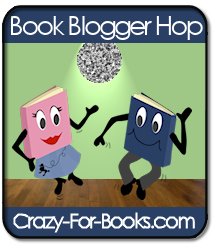So today, I am kicking off a new event here on Tahleen's Mixed-Up Files: Vampire Weekend! With real vampires. Not the kind that sing about Chapstick and Oxford commas.
Without further ado, here is post #1:
Title: Blue Bloods

Author: Melissa de la Cruz
Publisher: Hyperion, 2006
Where I got it: I bought this from Barnes & Noble.
Melissa de la Cruz' Blue Bloods series could be described as a vampire version of Gossip Girl upon first glance. It takes place in a swanky New York City private school for the extremely rich and powerful, and most of the main characters indulge themselves in everything: what they eat, where they shop, how they spend their time (there is a lot of underage everything). But beneath the surface, there is a lot more to these seemingly shallow teens.
Centering on the elite group of Blue Bloods, or vampires, of mean girl Mimi Force, her twin brother Jack, Mimi’s sidekick Bliss Llewellyn, and outcast Schuyler Van Alen (among others), these teens do not know what they are until age 15. Their bodies begin to go through changes, like sudden cravings for raw meat (the redder the better), strange flashbacks in the form of nightmares that seem to be from past lives, and the appearance of pronounced blue veins on their arms. They are then admitted into the Blue Bloods Society, where they learn about their own personal histories (past lives) and the changes they are undergoing, as well as the rules they must follow in their new lives. But some Blue Bloods are being killed, something that is supposed to be impossible; this mysterious enemy must be found before it kills more of them, because this death is permanent.
As it turns out, each member of the Blue Bloods has been alive since Lucifer was cast out of heaven, as they are all fallen angels who became vampires as punishment. They each have memories dating back to their arrival on earth, though they are reborn through the years. Keeping consistent with every other vampire mythos, these vampires require blood to survive, though they are strongly discouraged from taking on human “familiars” until they are older and are able to use them without abusing them (for example, leaving them enough recovery time between feedings). Some Blue Bloods also have special powers, like Schuyler, who can mesmerize others, in the fashion of many other vampire myths. But blood-drinking and the occasional occurrence of these powers is where the overlap ends—no other pieces of the vampire folklore finds its way into this world, except as myths themselves. Sun doesn’t harm them; they cannot die from wooden stakes; they can’t change anyone else into a vampire; they aren’t afraid of crucifixes, despite being cast from heaven—in fact, their main goal is to somehow find a way back to God and paradise.
Blue Bloods is infused with Biblical stories and American history, with some interesting twists on what really happened in history, including an explanation of the lost colony of Roanoke. This originality and complexity saves the series at the outset—without the fast-paced plot and mysteries behind the characters and their enemies, the books would fall flat. The initial shallowness of the characters can be extremely grating, and a person can only read so much about the antics of spoiled rich kids, especially when they don’t seem to have any sort of conscience. There is also a weird incestuous aspect between brothers and sisters who are twins; it’s a part of their society, but one that can be slightly creepy for readers if they think too much about it. But for the most part, this is offset by the series’ good qualities; each ends with a huge revelation and a subsequent cliffhanger that will lead many readers to the next books in the series. Just be warned: It is at least a PG-13 rating, as there is a lot of sex and language, and some violence. Overall, I’d recommend giving these books a shot, if you can stand its irritating drawbacks and can handle the mature content.


 Title:
Title: 




 See? Not nearly as good as the one I described.
See? Not nearly as good as the one I described.

















